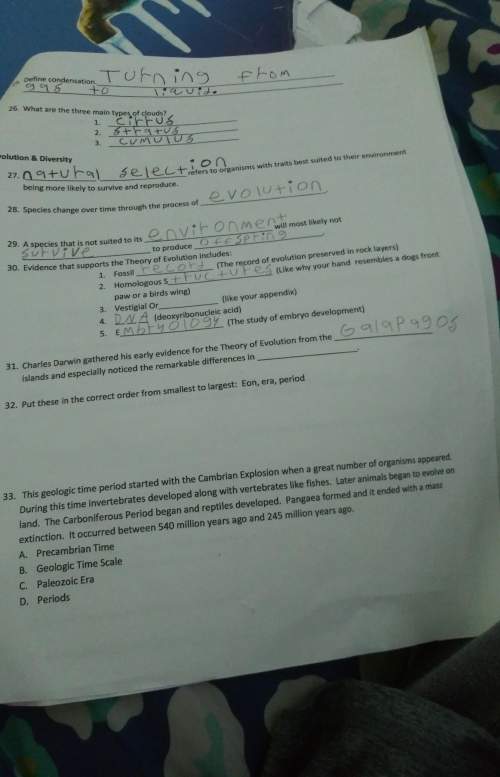
Physics, 15.12.2020 09:30 sammamamam1090
Incident ray X passes parallel to the principal axis of a concave lens. Incident ray Y passes parallel to the principal axis of a convex lens.
How do the rays behave differently after passing through each lens?
Ray X continues moving in the same direction, and ray Y refracts and passes through the focal point located behind the lens.
Both rays refract and move as though they passed through the focal point.
Ray X appears as though it passed through the focal point in front of the lens, and ray Y passes through the focal point on the other side of the lens.
Both rays continue moving in the same direction.

Answers: 1
Another question on Physics

Physics, 21.06.2019 19:30
Describe the path of a ray that approaches a mirror parallel to the principal axis.
Answers: 2

Physics, 21.06.2019 23:00
Aray of light traveling parallel to the principal axis of a concave mirror will be reflected through the mirror's
Answers: 2

Physics, 22.06.2019 00:30
Consider an ordinary, helium-filled party balloon with a volume of 2.2 ft3. the lifting force on the balloon due to the outside air is the net resultant of the pressure distribution exerted on the exterior surface of the balloon. using this fact, we can derive archimedes’ principle, namely that the upward force on the balloon is equal to the weight of the air displaced by the balloon. assuming that the balloon is at sea level, where the air density is 0.002377 slug/ft3, calculate the maximum weight that can be lifted by the balloon. note: the molecular weight of air is 28.8 and that of helium is 4.
Answers: 2

Physics, 22.06.2019 11:00
Consider a system to be two train cars traveling toward each other. what is the total momentum of the system before the train cars collide? kg • what must the total momentum of the system be after the train cars collide? kg •
Answers: 2
You know the right answer?
Incident ray X passes parallel to the principal axis of a concave lens. Incident ray Y passes parall...
Questions

English, 24.06.2019 00:00





Mathematics, 24.06.2019 00:00


Biology, 24.06.2019 00:00




English, 24.06.2019 00:00

Mathematics, 24.06.2019 00:00










